Politics
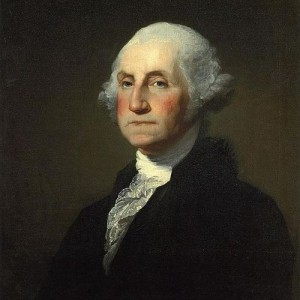
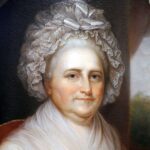 These days, when a president or other elected official is inaugurated, the ceremony is often followed that evening by an inaugural ball. In fact, it is pretty much expected, like the celebration of victory after a long, hard-fought battle. When our first president, George Washington was sworn into office as the first president of the United States, on the balcony of Federal Hall in New York City, New York, on April 30, 1789, all tradition concerning elections was brand new. Our country was still trying to figure out what our traditions would be at that point.
These days, when a president or other elected official is inaugurated, the ceremony is often followed that evening by an inaugural ball. In fact, it is pretty much expected, like the celebration of victory after a long, hard-fought battle. When our first president, George Washington was sworn into office as the first president of the United States, on the balcony of Federal Hall in New York City, New York, on April 30, 1789, all tradition concerning elections was brand new. Our country was still trying to figure out what our traditions would be at that point.
A week later, on May 3, 1789, George Washington attended a ball in his honor. These days inaugural balls are planned and held with every inauguration. In fact, most presidents attend several balls on inauguration night. Still, in 1789, they were brand new, and it would be another decade before the practice was revived, with the inaugural of James Madison, the fourth president. Dolley, President Madison’s wife, threw a gala for 400 people at Long’s Hotel in Washington. Tickets cost $4.00, which would have amounted to about $100.00 today. That was actually very reasonable, considering that they run about $350.00 today. I suppose that if you were part of high society, you would think nothing of that amount for a ball which would show your support of the new president, as well as, your position in society.
Since Madison’s inaugural ball, the events have become more or less a quadrennial presidential fixture. Today, we think nothing of the event, assuming that it is just part of the grand tradition of our electoral process and seating a new president. Nevertheless, there have been years that the Inaugural Ball has been cancelled. Woodrow Wilson, in 1913, and Warren Harding, in 1921, both passed up balls, citing the need to economize. Franklin Pierce canceled his in 1853 because of the recent death of his son. President Franklin D Roosevelt was another exception, choosing to work through the night rather than attend his first inaugural ball in 1933. He canceled the next three galas because of the Depression and World War II. 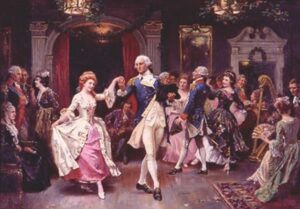
At the first ball, Washington danced with many ladies who were considered the cream of New York society. New York was the temporary site of the newly established federal government. Eliza Hamilton, wife of Alexander Hamilton, the treasury secretary, recorded her impressions in her memoirs. She wrote that Washington liked to dance the minuet, a dance she thought was “suited to his dignity and gravity.” In what would seem strange today, Martha Washington apparently did not attend the Inaugural Ball. One month to the day of her husband’s departure for New York, Martha Washington set out on her own triumphant trip to the seat of the new government, thereby becoming our first, First Lady.
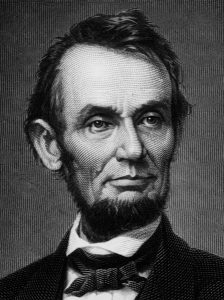
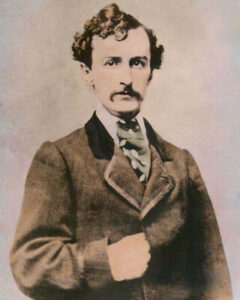 John Wilkes Booth was an actor, and as such, he had an expectation of applause following a performance. That is just what he thought the assassination of President Lincoln was. No, he didn’t think it was fake. He knew he was murdering the President of the United States, but he somehow thought people would consider it one of his greatest performances…the crowning moment of his stage career. It never occurred to him that the people who had loved him as an actor would suddenly turn against him.
John Wilkes Booth was an actor, and as such, he had an expectation of applause following a performance. That is just what he thought the assassination of President Lincoln was. No, he didn’t think it was fake. He knew he was murdering the President of the United States, but he somehow thought people would consider it one of his greatest performances…the crowning moment of his stage career. It never occurred to him that the people who had loved him as an actor would suddenly turn against him.
At the very least, he expected to be greeted with applause and support by those sympathetic to the Confederacy. Instead, he found, much to his shock and great dismay, that he was a hounded man, and few wanted to associate with him. Oh, the loyalists to the Confederacy did their duty by him, but with great reluctance. He first encountered this reaction when he and David Herold, who was an American pharmacist’s assistant and Wilkes accomplice in the assassination of Abraham Lincoln, stumbled upon a man in the dark, while searching for the home of Colonel Cox. The man, a local named Oswell Swann, reluctantly agreed to guide then to the Cox home, but only if he received payment for his services. He considered it just reward for the risk he was taking. Afterward, Swann collected his fee and vanished into the night, leaving the fugitives to the “hospitality” of Colonel Cox. That “hospitality” consisted of a few supplies, including whiskey, and a servant to lead the men to a hiding place in the woods. Cox certainly didn’t want these men to be found in his house.
Cox informed Booth that he was to “remain hidden in the woods until contacted.” Then Cox sent for Thomas Jones, a Confederate agent with experience in smuggling spies and information across the Potomac River into Virginia. Jones agreed to get them out and guide them across the Potomac, for a fee, but when he visited the fugitives in the woods, where they hid in a pine thicket, he told them it would be several days before he could do so. The manhunt for Booth and Herold was massive. Federal troops combed the area, searching properties and interrogating citizens over whether they had seen two men traveling together. Booth was very distressed, because instead of receiving the expected support and appreciation of the south, Booth found himself confined to a pine thicket!! Jones provided the men with newspapers, from which Booth discovered that he was widely considered a villainous murderer, rather than the Confederate hero he had expected to be. He wrote about his “horrible” fate, and the “injustice” of it all, in a diary he kept in an appointment book.
Federal authorities had most of the conspirators who had planned to kidnap Abraham Lincoln in custody by April 20, 1865. Several were not party to the assassination, but because they were involved in the kidnapping plans, they were held anyway. Three men were still not in custody…Booth, Herold, and John Surratt remained at large. The War Department put out wanted poster, released in Washington on April 20, offering a $50,000 reward for Booth, and $25,000 apiece for Herold and Surratt. By then, Surratt was hiding out in Canada, even though he knew that his mother was being held in federal custody. Coward that he was, Surratt was making plans to flee to Europe. Booth and Herold continued to cower in a pine thicket, relatively helpless. They didn’t dare leave, because they would be seen and immediately arrested. A dejected Booth spent his time drinking whiskey and scribbling in his makeshift diary over the unfairness of his reception. He believed his action had made him a martyr to the Confederate cause.
When the fugitives finally attempted to cross the Potomac, on about April 21, Jones’s guidance consisted of verbal instructions directing them to a waiting boat. These men had no boating experience, and the night was windy. The tides and swift current didn’t help matters either. Nor did the gunboats in the area. Booth whined into his diary, “last night being chased by gunboats till I was forced to return wet, cold, and starving.” Needless to say, the crossing was a failure, but Booth’s overly dramatic entry exaggerated what may have been an encounter with USS Juniper, positioned in the river near their point of crossing. Juniper’s log did not include a report of chasing anything that night. Booth likely spotted the gunboat, and in a panic, returned to the Maryland shore. Booth’s fugitive days ended when he was caught on April 26, 1865, near Port Royal, Virginia. As Booth and his co-conspirator, David Herold, cowered inside a barn, the soldiers demanded that they surrender. John Wilkes Booth died in agonizing fashion at the hands of Union soldiers in Port Royal, Virginia, 
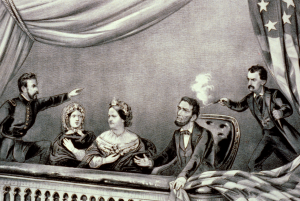 two weeks after he assassinated Abraham Lincoln. When the Union soldiers demanded their surrender, Herold complied. But Booth refused. He didn’t leave the barn until one of the soldiers set it on fire. As he tried to sneak out in the shadows and flame, a shot cracked through the silent night…and found its mark. Booth briefly held on to life, but in the end, the bullet would be his demise…in true disgraced style.
two weeks after he assassinated Abraham Lincoln. When the Union soldiers demanded their surrender, Herold complied. But Booth refused. He didn’t leave the barn until one of the soldiers set it on fire. As he tried to sneak out in the shadows and flame, a shot cracked through the silent night…and found its mark. Booth briefly held on to life, but in the end, the bullet would be his demise…in true disgraced style.
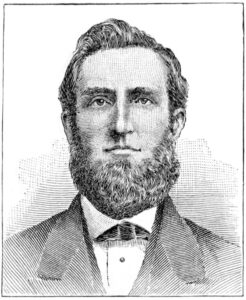
 During the Civil War, things like supply lines and lines of communication were crucial to both sides. The railroads became an important asset, as well as a liability, to both sides, depending on what they were carrying and where it was headed. On April 12, 1862, volunteers from the Union Army, led by civilian scout James J Andrews, commandeered a train called The General, and took it northward from Georgia toward Chattanooga, Tennessee. En route, they did as much damage as possible to the vital Western and Atlantic Railroad (W and A) line from Atlanta to Chattanooga. They were pursued for 87 miles by Confederate forces, trying at first to keep up on foot, and later resorting to a succession of locomotives, including The Texas.
During the Civil War, things like supply lines and lines of communication were crucial to both sides. The railroads became an important asset, as well as a liability, to both sides, depending on what they were carrying and where it was headed. On April 12, 1862, volunteers from the Union Army, led by civilian scout James J Andrews, commandeered a train called The General, and took it northward from Georgia toward Chattanooga, Tennessee. En route, they did as much damage as possible to the vital Western and Atlantic Railroad (W and A) line from Atlanta to Chattanooga. They were pursued for 87 miles by Confederate forces, trying at first to keep up on foot, and later resorting to a succession of locomotives, including The Texas.
Known as The Great Locomotive Chase, the military raid was also called the Andrews’ Raid or Mitchel Raid (after Major General Ormsby Mitchel, who had earlier assisted in the capture of Nashville and accepted the surrender of the city). In the end, as often happens in escapades like this, the raid made sensational headlines in newspapers, but it really had little impact on the war. It didn’t stop supply lines for the South or start new ones for the North.
In February, the Union soldiers captured Fort Henry and Fort Donelson, and Confederate General Albert Sidney Johnston knew he had to withdraw his forces from central Tennessee to reorganize. Johnston evacuated Nashville on February 23rd, and Nashville became the first Confederate state capital to fall to the Union. For Major General Don Carlos Buell, the taking of Nashville was enough, and on March 11th, Buell’s army was merged into the new Department of the Mississippi under General Henry Halleck. It was then that James J Andrews, a Kentucky-born civilian serving as a secret agent and scout in Tennessee approached Buell with a plan to take eight men to steal a train in Georgia and drive it north. Buell authorized the expedition in August 1863. Andrews, a train engineer in Atlanta, was willing to defect to the Union with his train, and without Andrews, taking over the train would have proved difficult. Getting onboard would have been easy enough, but running the train without experienced personnel is next to impossible. Since Andrews was willing to defect, he might also be able to supply a volunteer train crew to assist in running the train, tearing up track, and burning  bridges, so they would have an even greater chance of succeeding. The main target of the operation was the railway bridge at Bridgeport, Alabama, but Andrews had several other bridges in Georgia and Tennessee in mind too. Some of the men from Major General Mitchel’s division, encamped at Murfreesboro, Tennessee, were tapped to be the volunteers for this first raid.
bridges, so they would have an even greater chance of succeeding. The main target of the operation was the railway bridge at Bridgeport, Alabama, but Andrews had several other bridges in Georgia and Tennessee in mind too. Some of the men from Major General Mitchel’s division, encamped at Murfreesboro, Tennessee, were tapped to be the volunteers for this first raid.
The group of raiders moved south forty miles on foot to the Confederate railhead at Tullahoma. Then the caught a train to Marietta, Georgia. It was then that the operation hit its first snag, when Andrews discovered the engineer had been pressed into service elsewhere. Upon inquiring if any of the raiders knew how to operate a locomotive, they found that none did, and the raid was called off. Two raiders were also confronted by Confederate soldiers while trying to cut the telegraph lines, but successfully pretended to be overworked wiremen. Then the raiders returned north to Union lines, arriving about a week after they had departed. Andrews spent several days rearranging the operation and conducting reconnaissance on the Western and Atlantic Railroad before he headed north to federal lines too. The original raiders all refused to volunteer for the second raid, fearing the enemy. One said that “he felt all the time he was in the enemy’s country as though he had a rope around his neck.”
While the first raid was a bust, the second raid went off pretty well. The General was taken while the crew was a breakfast at the Lacey Hotel in Atlanta, and despite all the efforts to catch them, it arrived at milepost 116.3, north of Ringgold, Georgia, just 18 miles from Chattanooga and out of fuel. Andrews’s men abandoned The General and scattered. Andrews and all of his men were caught within two weeks. They even caught two volunteers who had the hijacking. Mitchel’s attack on Chattanooga was a failure.
All of the raiders were charged with “acts of unlawful belligerency.” The civilians among them were charged as unlawful combatants and spies. They were tried in military courts or courts-martial. Andrews was tried in 
 Chattanooga, found guilty, and hanged on June 7 in Atlanta. Seven others were transported to Knoxville and convicted as spies. They were returned to Atlanta and were hanged too. Their bodies were buried unceremoniously in an unmarked grave. Those bodies were later reburied in Chattanooga National Cemetery.
Chattanooga, found guilty, and hanged on June 7 in Atlanta. Seven others were transported to Knoxville and convicted as spies. They were returned to Atlanta and were hanged too. Their bodies were buried unceremoniously in an unmarked grave. Those bodies were later reburied in Chattanooga National Cemetery.
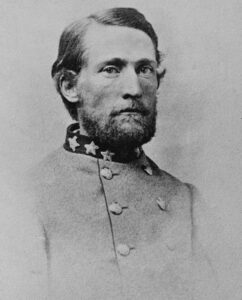 John Singleton Mosby was a Confederate army cavalry battalion commander in the American Civil War. He was also known as “The Gray Ghost.” Mosby’s command, the 43rd Battalion of the Virginia Cavalry was known as Mosby’s Rangers or Mosby’s Raiders. The Unit was a partisan ranger unit noted for its lightning-quick raids and its ability to elude Union Army pursuers and disappear, blending in with local farmers and townsmen. They were so quick and so skilled, that they practically vanished into thin air. Mosby was a legend, and the area of northern central Virginia soon became known as Mosby’s Confederacy. When the war was over, Mosby went on to become a Republican and worked as an attorney, supporting his former enemy’s commander, US President Ulysses S Grant. His political career took him to the US Department of Justice, where he served as the American consul to Hong Kong.
John Singleton Mosby was a Confederate army cavalry battalion commander in the American Civil War. He was also known as “The Gray Ghost.” Mosby’s command, the 43rd Battalion of the Virginia Cavalry was known as Mosby’s Rangers or Mosby’s Raiders. The Unit was a partisan ranger unit noted for its lightning-quick raids and its ability to elude Union Army pursuers and disappear, blending in with local farmers and townsmen. They were so quick and so skilled, that they practically vanished into thin air. Mosby was a legend, and the area of northern central Virginia soon became known as Mosby’s Confederacy. When the war was over, Mosby went on to become a Republican and worked as an attorney, supporting his former enemy’s commander, US President Ulysses S Grant. His political career took him to the US Department of Justice, where he served as the American consul to Hong Kong.
Mosby was born to Virginia McLaurine Mosby and Alfred Daniel Mosby in Powhatan County, Virginia, on December 6, 1833. He was a graduate of Hampden–Sydney College. Mosby’s father was a member of an old Virginia family of English origin whose ancestor, Richard Mosby, 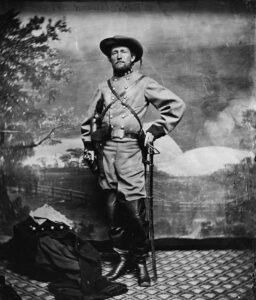 was born in England in 1600. The family settled in Charles City, Virginia in the early 17th century. Young Mosby was named after his maternal grandfather, John Singleton, who was ethnically Irish.
was born in England in 1600. The family settled in Charles City, Virginia in the early 17th century. Young Mosby was named after his maternal grandfather, John Singleton, who was ethnically Irish.
While Mosby was a hero in some ways and a politician, there was another side of him too. Mosby was a Confederate battalion commander, yes, but he was known for his guerrilla military tactics. One of his biggest victories of the war found him and 29 of his men infiltrating the area surrounding the Fairfax County Courthouse in the middle of the night. They caught the Union officers completely off-guard, because they were 10 miles safe behind Union lines. The situation gave Mosby the opportunity he needed. He had captured a general, 30 other Union soldiers, and nearly 60 horses, which was already an incredibly valuable take during the war. In addition, Mosby decided to treat himself, and maybe or maybe not his men, to many of the Union men’s valuables, gathering quite a treasure for himself.
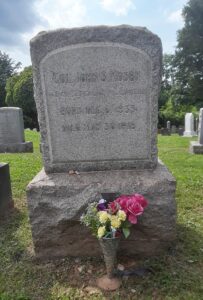
While they were taking their prisoners into Confederate territory, they were informed about Union troops in the area. Mosby decided that he needed to protect his goods. So, he left the group and buried his treasure between two trees. He marked the spot with an X. As sometimes happened, Mosby switched sides politically, and personally, after the war. He chose to support Lincoln and even went on to serve on President Grant’s administration. So, what of the treasure? Well, apparently Mosby never retrieved the treasure he pillaged. Some people reported that he sent Confederate soldiers to dig it up, but they were caught and killed by Union soldiers. And if that was the case, either they hadn’t started digging yet, or hadn’t made it to the location yet, because to this day, the treasure has never been found. I guess he took the location to his grave. John S Mosby died of complications after throat surgery in a Washington, DC hospital on May 30, 1916, noting at the end that it was Memorial Day. He is buried at the Warrenton Cemetery in Warrenton, Virginia.
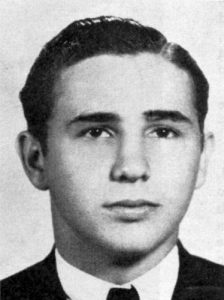
 Once upon a time, journalists and the media as a whole had an obligation to tell the truth, or at least tell the public that the story was their opinion only. The had to have reliable sources, even if they didn’t have to disclose them. While they weren’t “forced” to be truthful, they were completely shunned if they didn’t.
Once upon a time, journalists and the media as a whole had an obligation to tell the truth, or at least tell the public that the story was their opinion only. The had to have reliable sources, even if they didn’t have to disclose them. While they weren’t “forced” to be truthful, they were completely shunned if they didn’t.
When a journalist is mesmerized by someone, they can definitely fall hard for them. Such was the case with “the job-creating Führer with eyes that were like ‘blue larkspur.'” Why did so many journalists spend years dismissing the evidence of Hitler’s atrocities? Some, like the Christian Science Monitor called Hiter’s effect on Germany as providing “a dark land a clear light of hope.” They talked about how smoothly things were running, how well regulated everything was, and how great the police uniforms were. Strangely, when it came to the killing of the Jewish people, they said things like, “I have so far found quietness, order, and civility;” there was “not the slightest sign of anything unusual afoot.” As for all those “harrowing stories” of Jews being mistreated…they seemed to apply “only to a small proportion;” most were “not in any way molested.” They made it seem like as long as the number were “low,” the problem couldn’t possibly be a big one. Well, the reality as we all know now is that the “problem” was enormous, heinous, and horrific beyond imagination.
Trusting the journalists implicitly, without doing your own research is a very dangerous plan. Journalists have been known to assist in “hiding the evidence” in a matter…as we have seen in recent years. I don’t believe that all journalists are “bad” people, but those that are “bad” people ruin the reputation of journalism for every good journalist. I’m not even sure I would call some of the media, journalists. They are truly just “bad fiction writers,” in my opinion. Anyone who covers up the truth in the name of free speech or forces others to hide the truth in the name of tolerance is a bad journalist.
Many in the American mainstream newspaper industry portrayed the Hitler regime positively, especially in its 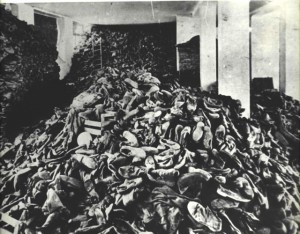
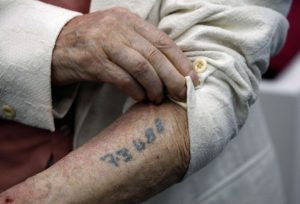 early months. Looking back now, we wonder how they could have said the good things they said about such a horrible dictator. The media published warm human-interest stories about Hitler, while simply excusing or rationalizing Nazi anti-Semitism. These actions should haunt the conscience of United States Journalism to this day. There was no excuse for what Hitler did, and to write it off as “not so bad” was absolutely inexcusable.
early months. Looking back now, we wonder how they could have said the good things they said about such a horrible dictator. The media published warm human-interest stories about Hitler, while simply excusing or rationalizing Nazi anti-Semitism. These actions should haunt the conscience of United States Journalism to this day. There was no excuse for what Hitler did, and to write it off as “not so bad” was absolutely inexcusable.
Of course, not all of the “bad journalism” of the day was sinister. Hitler was an unfamiliar subject when he first appeared on the international scene. His ideals and his movement were unknown, and so could have been mistaken for something quite innocent…at first. The Nazis had risen from barely 18 percent of the national vote in mid-1930 to become Germany’s largest party only two years later and gained power just months after that. I suppose that the political rise of Hitler could have just seemed like someone with great ideas stepping up to the microphone. It is thought that many American editors and reporters erroneously assumed, based on previous experience, that a radical candidate would show some restraint once in office, but that was not Hitler’s plan. He planned to take over the world…to become a One World Government. Really, any time anyone tries to take away the sovereignty of a country, they are not acting in the best interest of that country. That is something we must never forget.
An editorial in the Philadelphia Evening Bulletin on January 30, 1933, asserted that “there have been indications of moderation” on Hitler’s part. The editors of The Cleveland Press, on January 31, 1933, claimed the 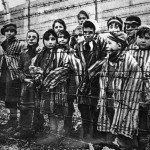
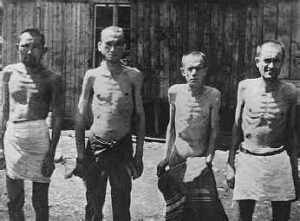 “appointment of Hitler as German chancellor may not be such a threat to world peace as it appears at first blush.” Frederick Birchall, Berlin bureau chief for The New York Times, found “a new moderation” in the political atmosphere following Hitler’s rise to power. Unfortunately, all of them were dead wrong!! Hitler was not a moderate. He was, in fact, more of a threat than they could ever have imagined. Hitler was the epitome of evil, and like it or not, any journalist who softened the story, was guilty of hiding the evidence.
“appointment of Hitler as German chancellor may not be such a threat to world peace as it appears at first blush.” Frederick Birchall, Berlin bureau chief for The New York Times, found “a new moderation” in the political atmosphere following Hitler’s rise to power. Unfortunately, all of them were dead wrong!! Hitler was not a moderate. He was, in fact, more of a threat than they could ever have imagined. Hitler was the epitome of evil, and like it or not, any journalist who softened the story, was guilty of hiding the evidence.
 We have all heard of stunt doubles. They are the people who make the shows we watch seem fearless as they perform their daring feats and even some that aren’t really so daring, but they just don’t want their actors scratched. Somehow these people, at least at a distance look just like the actor they are supposed to be. Sometimes they are very close, as in the case of brothers, David Paul Olsen, who is the stunt double for his brother, Eric Christian Olsen on NCIS Los Angeles. They aren’t twins, but the brothers loo enough alike to pull it off during filming.
We have all heard of stunt doubles. They are the people who make the shows we watch seem fearless as they perform their daring feats and even some that aren’t really so daring, but they just don’t want their actors scratched. Somehow these people, at least at a distance look just like the actor they are supposed to be. Sometimes they are very close, as in the case of brothers, David Paul Olsen, who is the stunt double for his brother, Eric Christian Olsen on NCIS Los Angeles. They aren’t twins, but the brothers loo enough alike to pull it off during filming.
While this is common, there is another type of “double” that is just as often used and is much less known. Government officials such as presidents, kings, and even congress or parliament members have been known to use doubles so that they can travel safely without worrying about being assassinated. Strangely, these doubles are very often denied. We are told that we are imagining things, but when we take a moment to look closely, the differences are obvious. This has gone on throughout history, although probably not as easily as the more recent history.
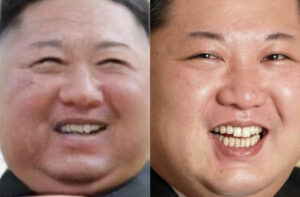
Sometimes the double goes to extremes, such as plastic surgery, but my guess is that with the more recent ability to make life-like masks, the need for such extreme measures has lessened. Still, anyone who is awake knows that doubles are and likely will always be used to protect or hide that elites who feel the need to move in relative anonymity. The possibilities are endless really. Having a double could mask a death of a high ranking official, such as, it has been believed, Kim Jong-Un, who has been seen looking heavy and then a short time later, thinner, when it would be impossible for him to have lost the weight so quickly. They can deny it all they want to, but when you look at things that are harder to change, like ear lobes, chins, and even teeth that seem to go back and forth from chipped to not chipped. No body double or stunt double is going to be a perfect match, even with plastic surgery. Facial shape and bone structure are going to have slight differences…even in  identical twins…which could be the easiest body double to use, if the twin is not the “important” person his or her sibling is. How awesome would that be to face up to? “Yes, I’m my brother’s body double, because I am expendable.” Right!! How wonderful would that feel for the non-important twin?
identical twins…which could be the easiest body double to use, if the twin is not the “important” person his or her sibling is. How awesome would that be to face up to? “Yes, I’m my brother’s body double, because I am expendable.” Right!! How wonderful would that feel for the non-important twin?
We can argue that some of our prominent politicians these days have body doubles, or we can “stick our heads in the sand” and believe that they don’t, but the reality is that if you look closely, you will see that they very likely do have a double. With the internet, and the multitude of pictures taken of a politician every day, it becomes more and more difficult to deny what is right there in front of our eyes. It up to us to decide to believe what we are told or search out the truth.
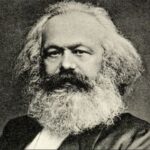
 There are a number of different kinds of governments, and people disagree on which is the best. Personally, I think that any government that takes away the freedoms of its people is destined to fail. Communism is a “political theory derived from Karl Marx, advocating class war and leading to a society in which all property is publicly owned, and each person works and is paid according to their abilities and needs.” Communism is also, known as Marxism, which is defined as “the political and economic theories of Karl Marx and Friedrich Engels, later developed by their followers to form the basis for the theory and practice of communism.” I don’t think most people know the real meaning of Marxism or Communism, or, for that matter, Socialism, which is “a political and economic theory of social organization which advocates that the means of production, distribution, and exchange should be owned or regulated by the community as a whole.” If people knew what these types of governments are really like, they would fight to keep them out of their countries. The problem is that people think the government will take care of them, and that they will benefit from the work of others. It never works that way. everyone in these situations gets poorer, except for the government.
There are a number of different kinds of governments, and people disagree on which is the best. Personally, I think that any government that takes away the freedoms of its people is destined to fail. Communism is a “political theory derived from Karl Marx, advocating class war and leading to a society in which all property is publicly owned, and each person works and is paid according to their abilities and needs.” Communism is also, known as Marxism, which is defined as “the political and economic theories of Karl Marx and Friedrich Engels, later developed by their followers to form the basis for the theory and practice of communism.” I don’t think most people know the real meaning of Marxism or Communism, or, for that matter, Socialism, which is “a political and economic theory of social organization which advocates that the means of production, distribution, and exchange should be owned or regulated by the community as a whole.” If people knew what these types of governments are really like, they would fight to keep them out of their countries. The problem is that people think the government will take care of them, and that they will benefit from the work of others. It never works that way. everyone in these situations gets poorer, except for the government.
The Union of Soviet Socialist Republics (USSR) was established in post-revolutionary Russia, on December 30, 1922. It combined Russia, Belorussia, Ukraine and the Transcaucasian Federation (which was divided in 1936 into the Georgian, Azerbaijan and Armenian republics). The new nation was also known as the Soviet Union. It was the successor to the Russian Empire and the first country in the world to be based on Marxist socialism. The rest of the world was rather stunned that this kind of regie actually existed, because it took away so many freedoms and personal property, and the people had no choice.
Because Russia was reeling from the Russian Revolution of 1917 and subsequent three-year Russian Civil War, the Bolshevik Party under Vladimir Lenin dominated the soviet forces. A coalition of workers’ and soldiers’ committees called for the establishment of a socialist state in the former Russian Empire. It was from there that the USSR was formed, and after that, all levels of government were controlled by the Communist Party, and the party’s Politburo, with its increasingly powerful general secretary, who effectively ruled the country. Everything, from Soviet industry was owned and managed by the state, and agricultural land was immediately confiscated and divided into state-run collective farms.
Over the coming decades, the Russian-dominated Soviet Union grew into one of the world’s most powerful and influential states. It eventually encompassed 15 republics…Russia, Ukraine, Georgia, Belorussia, Uzbekistan, Armenia, Azerbaijan, Kazakhstan, Kyrgyzstan, Moldova, Turkmenistan, Tajikistan, Latvia, Lithuania and Estonia. 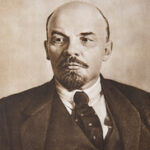
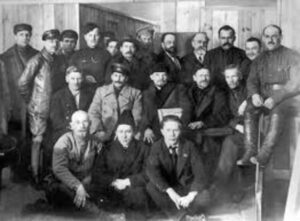 The USSR, as many knew it must, eventually failed because you can’t place people into a slave state without eventual rebellion. In 1991, the Soviet Union was dissolved following the collapse of its communist government. Communism, Marxism, and Socialism simply won’t work in the long run. If a nation wants growth and prosperity, they must have capitalism, so that the people have the incentive to be entrepreneurs, inventors, scientists, and so many other occupations in which discovery is made. Without incentive, people will simply quit.
The USSR, as many knew it must, eventually failed because you can’t place people into a slave state without eventual rebellion. In 1991, the Soviet Union was dissolved following the collapse of its communist government. Communism, Marxism, and Socialism simply won’t work in the long run. If a nation wants growth and prosperity, they must have capitalism, so that the people have the incentive to be entrepreneurs, inventors, scientists, and so many other occupations in which discovery is made. Without incentive, people will simply quit.
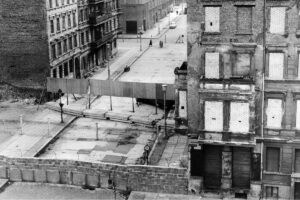
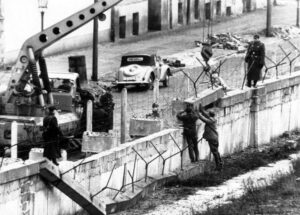 In August of 1961, virtually overnight, the Berlin appeared, separating East and West Berliners from each other. Streets, subway lines, bus lines, tramlines, canals, and rivers were divided. Family members, friends, lovers, schoolmates, work colleagues, and others were abruptly separated. For many, life was put on hold. That meant that families were instantly separated from each other, and there was nothing anyone could do about it. If a child was spending the night with a grandparent, they now had to stay there. If couples were separated, possibly due to jobs or something, they couldn’t get back together. Families who lived on opposite sides of town, couldn’t see each other. No recourse. All the families could do was stand beside the wall and talk to each other.
In August of 1961, virtually overnight, the Berlin appeared, separating East and West Berliners from each other. Streets, subway lines, bus lines, tramlines, canals, and rivers were divided. Family members, friends, lovers, schoolmates, work colleagues, and others were abruptly separated. For many, life was put on hold. That meant that families were instantly separated from each other, and there was nothing anyone could do about it. If a child was spending the night with a grandparent, they now had to stay there. If couples were separated, possibly due to jobs or something, they couldn’t get back together. Families who lived on opposite sides of town, couldn’t see each other. No recourse. All the families could do was stand beside the wall and talk to each other.
From the time of its construction, it was more than two years after before anyone was able to cross from one side of the wall to the other. In the meantime, children grew, children were born, people died. Some children and grandchildren never got to see their parents or grandparents again. The whole purpose of the Berlin Wall was to force the people in East Berlin to accept communism. The only way they “might be able” to stay alive was to comply. So, the citizens of East Berlin became virtual prisoners overnight. Their sentence was long, and they had no trial. They were simply locked up in their own city.
The “sentence” continued for more than two years, before anything changed. Then, finally, on December 20, 1963, nearly 4,000 West Berliners were allowed to cross into East Berlin to visit relatives. It was called a “one-day pass” and didn’t mean the end of the siege. Nevertheless, it was a moment of hope. The day was a result 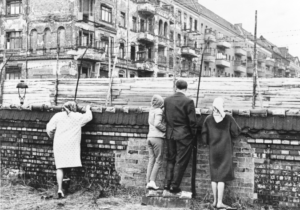
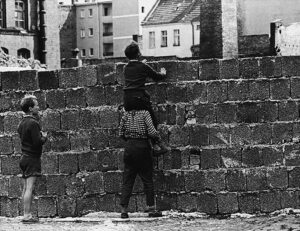 of an agreement reached between East and West Berlin. Eventually, over 170,000 passes were issued to West Berlin citizens, each pass allowing a one-day visit to communist East Berlin. Of course, there would be no passes for East German citizens to visit the west. The government knew they would not come back.
of an agreement reached between East and West Berlin. Eventually, over 170,000 passes were issued to West Berlin citizens, each pass allowing a one-day visit to communist East Berlin. Of course, there would be no passes for East German citizens to visit the west. The government knew they would not come back.
The day was marketed as a “wonderful government” doing some kind of a great thing. There were also moments of poignancy and propaganda. The reunions who were filled with tears, laughter, and other outpourings of emotions as mothers and fathers, sons and daughters finally met again. They were grateful, if only for a short time. The tensions of the Cold War were ever close by.
As people crossed through the checkpoints, loudspeakers in East Berlin greeted them. They were told that they were now in “the capital of the German Democratic Republic,” a political division that most West Germans refused to accept. The propaganda continued as each visitor was given a brochure that explained that the wall was built to “protect our borders against the hostile attacks of the imperialists.” They were told that decadent western culture, including “Western movies” and “gangster stories,” were flooding into East Germany before the wall sealed off such dangerous trends. The picture they were painting was of the East German government being the “saviors of the morality” of the people.
The West Berliners weren’t terribly happy either and many newspapers charged that the visitors charging that they were just pawns of East German government propaganda. It was said that the whole thing was a ploy to 
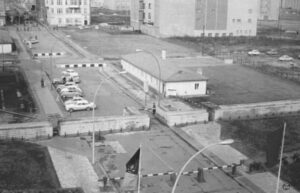 gain West German acceptance of a permanent division of Germany. Whatever the case may be, the visitors felt that they had no choice to comply with the rules, because their hearts were being torn out by these separations. The separation continued until President Reagan called for the wall to be torn down in a speech in West Berlin on June 12, 1987…almost 26 years after it was built.
gain West German acceptance of a permanent division of Germany. Whatever the case may be, the visitors felt that they had no choice to comply with the rules, because their hearts were being torn out by these separations. The separation continued until President Reagan called for the wall to be torn down in a speech in West Berlin on June 12, 1987…almost 26 years after it was built.

 When a country is fighting for recognition, one of the most important events is when other countries recognize your country as being an independent nation. It’s rather hard to conduct business with other nations, if you are viewed as a rouge or non-existent nation. That was the position the United States found themselves in right after the Declaration of Independence was adopted. Just because a country adopts its declaration of independence, doesn’t mean that it’s a done deal. That document can and has been the cause of major wars. The United States was no exception on the war end of that either. They fought long and hard to win that declared independence from Great Britain.
When a country is fighting for recognition, one of the most important events is when other countries recognize your country as being an independent nation. It’s rather hard to conduct business with other nations, if you are viewed as a rouge or non-existent nation. That was the position the United States found themselves in right after the Declaration of Independence was adopted. Just because a country adopts its declaration of independence, doesn’t mean that it’s a done deal. That document can and has been the cause of major wars. The United States was no exception on the war end of that either. They fought long and hard to win that declared independence from Great Britain.
Finally, the coveted recognition came when on December 17, 1777, the French foreign minister, Charles Gravier, count of Vergennes, officially acknowledged the United States as an independent nation. It came after news of the Continental Army’s overwhelming victory against the British General John Burgoyne at Saratoga. The victory gave Benjamin Franklin new leverage in his efforts to rally French support for the American rebels. Although the victory occurred in October, news did not reach France until December 4th. Remember that this mail system was worse than “snail mail” ever was. Messages had to be sent by ship across the ocean.
Benjamin Franklin had quickly mustered French support upon his arrival in December 1776. France’s humiliating loss of North America to the British in the Seven Years’ War made the French eager to see an American victory. Still, the French king worried about the consequences of backing “the rebels” openly. You can’t really blame him because an act like that could bring war to his own country. Still, he did back them in every other way. In May 1776, Louis XVI sent unofficial aid to the Continental forces and the playwright Pierre-Augustin Caron de Beaumarchais helped Franklin organize private assistance for the American cause.
Benjamin Franklin, who often wore a fur cap, captured the imagination of Parisians as an American man of nature and his well-known social charms stirred French passions for all things American. His personality made him the toast of Parisian society. He was very knowledgeable, and he had a way of enchanting groups of people 
 with his wide-ranging knowledge, social graces, and witty conversation. Nevertheless, he was not allowed to appear at court, so any legal assistance he might have offered in the defense of the United States, was never heard.
with his wide-ranging knowledge, social graces, and witty conversation. Nevertheless, he was not allowed to appear at court, so any legal assistance he might have offered in the defense of the United States, was never heard.
Finally, with the impressive and long-awaited rebel victory at Saratoga, Louis XVI was convinced that the American rebels had some hope of defeating the British empire. His enthusiasm for the victory paired with French Foreign Minister Gravier’s concern that the loss of Philadelphia to the British would lead Congress to surrender, gave Franklin two influential allies with two powerful, albeit opposing reasons for officially backing the American cause, and so it was that a formal treaty of alliance with the United States followed on February 6, 1778.
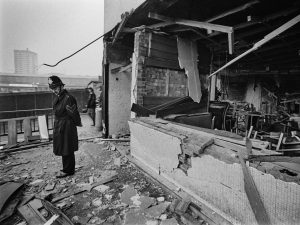 On November 21, 1974, after two Irish Republican Army (IRA) bombs exploded in two separate Birmingham pubs, killing 21 people and injuring hundreds, an investigation was opened to find the culprits. Almost immediately, the investigation centered on six men, later known as the Birmingham Six. For years the IRA and the British government had been at odds over the status of Northern Ireland, in fact you had to be hiding under a rock if you didn’t know about it. Still, on that November day, it all came to a head. The bombs exploded, destroying everything and killing or hurting everyone in sight.
On November 21, 1974, after two Irish Republican Army (IRA) bombs exploded in two separate Birmingham pubs, killing 21 people and injuring hundreds, an investigation was opened to find the culprits. Almost immediately, the investigation centered on six men, later known as the Birmingham Six. For years the IRA and the British government had been at odds over the status of Northern Ireland, in fact you had to be hiding under a rock if you didn’t know about it. Still, on that November day, it all came to a head. The bombs exploded, destroying everything and killing or hurting everyone in sight.
The most immediate reaction of the British government was to outlaw the IRA. Virtually overnight, they were declared a terrorist group in all the United Kingdom. Thus began the worst miscarriage of justice in British history. Immediately, authorities rushed to arrest and convict the IRA members who were responsible for these horrific acts. Six Irish suspects were picked up. They were Hugh Callaghan, Patrick Joseph Hill, Gerard Hunter, Richard McIlkenny, William Power, and John Walker. During interrogation, four of the men signed confessions, which made no sense, because even the IRA, which had claimed responsibility for the Birmingham bombings, said that the six were not members of its organization.
That begs the question, that if the IRA claimed responsibility and specifically said these men were part of their organization, how could these men be tried, found guilty, and sentenced. Nevertheless, they were, and they  served 16 years before something was done about it. These men declared their innocence almost from the beginning…if you take the signed confessions at face value, and assume they were not coerced. The men stated and never wavered, that the police had beaten the confessions out of them. Many people would agree. Of course, the prosecutors denied this and also came up with forensic evidence that apparently proved that the Birmingham Six had handled explosives shortly before their arrest. It appeared that they just wanted to get a conviction so things could settle down. I’m sure they were under a lot of pressure to solve the crime.
served 16 years before something was done about it. These men declared their innocence almost from the beginning…if you take the signed confessions at face value, and assume they were not coerced. The men stated and never wavered, that the police had beaten the confessions out of them. Many people would agree. Of course, the prosecutors denied this and also came up with forensic evidence that apparently proved that the Birmingham Six had handled explosives shortly before their arrest. It appeared that they just wanted to get a conviction so things could settle down. I’m sure they were under a lot of pressure to solve the crime.
Following their convictions, the men were sentenced to lengthy prison terms. In all they spent 16 years in prison, before something changed. I’m sure they thought they would never be free again, but their convictions were declared “unsafe and unsatisfactory” and quashed by the Court of Appeal on 14 March 1991. Apparently, this all came about as a result of the widespread questioning of their guilt by the British people. They started seeing that things just didn’t add up, and yet, here were these men, locked up and seemingly innocent of any crime. In the face of all this, the British authorities released the so-called “Birmingham Six.” The six Irish men who had been sent to prison 16 years earlier for the 1974 terrorist bombings of two pubs in Birmingham, England. To further prove the error, in 1985, the forensic evidence was exposed by scientists as unreliable at best!! The nightmare for the Birmingham Six was coming to an end, and the nightmare for the British government was just beginning. In 1987 an appeals judge conceded that the same results could be obtained 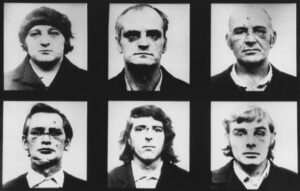 from testing people who recently touched playing cards or cigarette paper, and yet these men were convicted of a bombing based on that same lack of credible evidence. Even with all that information, it took until March 1991, before the people across Britain and Ireland began calling for their release. Finally, they were freed after years in prison. They were free, but their story didn’t end there. Seven years later, a British court of appeals formally overturned their sentences, citing serious doubts about the legitimacy of the police evidence and the treatment of the suspects during their interrogation. The six men were later awarded compensation ranging from £840,000 to £1.2 million.
from testing people who recently touched playing cards or cigarette paper, and yet these men were convicted of a bombing based on that same lack of credible evidence. Even with all that information, it took until March 1991, before the people across Britain and Ireland began calling for their release. Finally, they were freed after years in prison. They were free, but their story didn’t end there. Seven years later, a British court of appeals formally overturned their sentences, citing serious doubts about the legitimacy of the police evidence and the treatment of the suspects during their interrogation. The six men were later awarded compensation ranging from £840,000 to £1.2 million.

